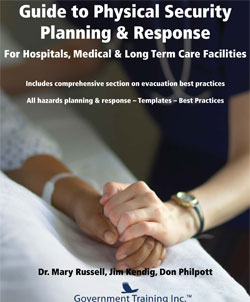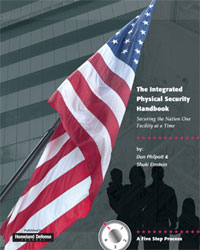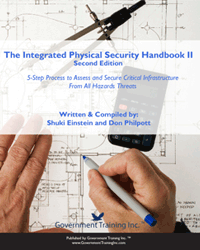Guide to Physical Security Planning & Response
For Hospitals, Medical, Long Term Care FacilitiesIncludes comprehensive section on evacuation best practices
By: Dr Mary Russell, Jim Kendig & Don Philpott
Published by: Government Training Inc.
ISBN: 978-1-937246-70-9
Hurricane Irene swept up the Atlantic coast in August threatening New York City and forcing the
evacuation of hospitals and nursing homes. Hurricanes don’t normally extend so far north but this
once in a lifetime event illustrates how essential it is to be prepared for any eventuality.
This new – and timely – comprehensive guide is an A to Z of all-hazards planning for all healthcare
facilities. While it is focused on hospitals the guidance and procedures covered are equally relevant for
nursing homes, assisted living facilities and special needs homes.
Healthcare facilities must not only have comprehensive physical security plans in place to cover
man-made and natural disasters, they have to have procedures and agreements to facilitate a
major evacuation should the need arise. Evacuating one unit of a hospital poses problems but what
happens when five city hospitals have to evacuate all their patients in a matter of hours because of an
approaching major hurricane?
While the challenge is daunting, it has to be planned for and that is what this guide sets out to do. It
leads you through an easy to understand five-step process that covers everything you need to know in
order to create and implement an effective all hazards planning and response plan.
The book’s five step process details planning, risk and vulnerability assessments and setting up incident
command centers. There is a comprehensive section on emergency specific responses from terrorism
and bio-spills to extreme weather events like floods and tornados.
The section on evacuation planning includes general evacuation guidelines, planning, training and
transportation. There is also information on setting up alternate care sites and recovery following the
event.
The guide is packed with case studies, templates, best practices and checklists.
It is written by Florida experts who between them have enormous experience in emergency planning
and evacuation having tackled major hurricanes and mass evacuations several times. Their expertise and
lessons learned are documented throughout the book so that you can benefit from them.
Whether you are part of a major health group with many hospitals or employed in a small nursing home,
this is an invaluable resource and a must-read book.
Introduction
This book while focusing on hospitals is aimed at all health care providers – from the largest hospital
to the smallest private nursing home. In the event of an emergency the challenges facing them all
are the same even though the logistics are very different. However, they are all part of the emergency
planning system and all should be prepared accordingly.
The National Response Framework (NRF), published by the Department of Homeland Security
in 2008, serves as a guide for all response agencies at every level in the United States, including
hospitals, to use common training, language, and responses as an all-hazards approach to disasters.
This unified national response to disasters recommend using Incident Command System (ICS)
language for response roles, referencing job action sheets for responsibilities associated with those
roles.
Hospitals use a Hospital Incident Command System (HICS) approach which is aligned with the
National Incident Management System (NIMS) and the way other response agencies are directed
to act. This includes local, county, regional, state, tribal and federal levels. Hospitals need to comply
with NIMS objectives if they receive federal preparedness and response grants, contracts, or cooperative
agreement funds.
Two other resources that should be taken into account are the National Security Strategy May
2010, and the National Infrastructure Protection Plan 2009, both of which stress the importance
of an integrated, multi-agency approach in emergency planning to protect people and the critical
infrastructure they depend on. While most health care providers, especially hospitals, have emergency plans in place many smaller health care facilities do not.
Hospitals and nursing homes are required to have emergency plans in place to cope with manmade,
technological and natural disasters using an “all hazards” approach. The Centers for Medicare
& Medicaid Services requires hospitals and nursing homes that receive Medicare or Medicaid payments
to maintain and exercise emergency plans.
The Joint Commission (TJC) requires that hospitals and nursing homes it accredits maintain and
exercise emergency plans that include processes for evacuations.
Hospital and nursing home administrators often have the responsibility for deciding whether to
evacuate their patients or to shelter in place during a disaster.
To know more, download the PDF from mid right portion of this webpage ...
Fee:
| Category | Book Price | S&H | Total |
| Federal, DoD, State,Local Government (Must have gov’t email address) |
$54.50 | $9.50 | $64.00 |
| U.S. Corporate and NGO | $59.50 | $9.50 | $69.00 |
| International | $59.50 | $50.00 | $109.50 |

OR

For quantity purchases of 5 or more, please contact Customer Service at 941-306-7968 or Book.Service[at]GovernmentTrainingInc.com




